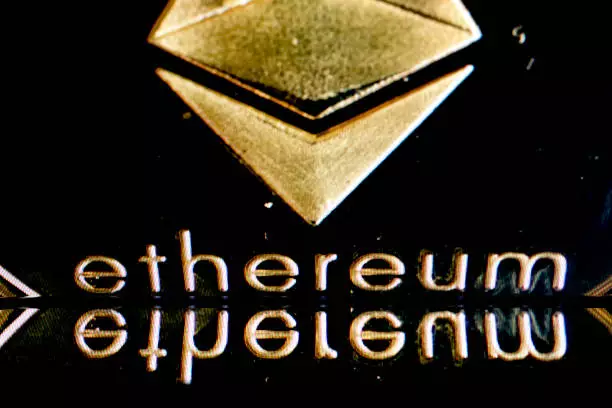The cryptocurrency market is notoriously volatile, and Ethereum has become a poster child for this capricious nature. Despite any fleeting moments of stability, the recent price fluctuations—from a drop to around $2,100 to a quick rebound—underscore a disturbing reality: the crypto world is more reactionary than it is rational. It’s easy to be swept up in the waves of euphoria or despair, especially given the hype surrounding digital currencies. In the broader context of market movements, such as Bitcoin dipping below $100,000, it raises a pivotal question: are we investing in an asset, or are we merely participants in a high-stakes gambling spree?
Identifying accuracy and relevance in market analyses has become increasingly challenging as experts offer conflicting predictions. While some tout a potential rally pushing Ethereum’s price toward $6,000, others suggest a downturn that could threaten long-term investments. The disarray leads to a critical examination of whether these projections are grounded in the realities of market behaviors or influenced by speculative sentiment.
Amateur Analysts and the Spread of Misinformation
Social media platforms have birthed a new breed of analysts—some knowledgeable and others not so much. For instance, the prevalent use of technical patterns, such as Elliott Wave Theory and Wyckoff’s methods, serves as a double-edged sword. On one hand, serious traders utilize these frameworks to navigate the confusing landscape; on the other hand, many amateur analysts misinterpret data, diluting the overall quality of market insights. When these miscalculations propagate through platforms like X, they can sway the opinions of less-informed investors to make poor choices, exacerbating market fluctuations rather than stabilizing them.
As these unofficial analysts throw around terms like “Wave A” or “Wyckoff accumulation,” it often feeds a narrative that oversimplifies and misconstrues the complex market dynamics at play. The reality is that no amount of complex charting can truly predict the chaotic behavior of cryptocurrencies, which are frequently influenced by external factors—regulatory news, technological developments, or even celebrity endorsements.
The Case for a Skeptical Investment Approach
The current atmosphere surrounding Ethereum requires potential investors to employ a more skeptical and discerning approach. With predictions suggesting that we are on the cusp of a “markup phase,” as claimed by some analysts, it’s crucial to question whether any positive outlook rests on solid ground. How valid are the interpretations of patterns and trends that predict Ethereum reaching a price point significantly higher than its historical highs?
Moreover, the notion of waiting for the “ideal buy zone,” as pointed out by certain analysts, further complicates investment strategies. Short-term crashes followed by temporary recoveries can entrap unwitting investors in cycles of panic selling or desperate buying—both detrimental to their financial health. Instead of chasing after fleeting highs with the hopes of a quick profit, a more prudent strategy would be to assess long-term viability based on tangible fundamentals rather than speculative price movements.
Long-Term Viability or Short-Term Speculation?
The question looms large: is Ethereum poised for long-term success, or does it remain marred by the pitfalls of speculative trading? As we examine various analyses that predict bullish outcomes over the next six months to a year, it’s essential to recognize the inherent risks within the cryptocurrency market. While some prognosticators paint a rosy picture of Ethereum surging to $6,000 or beyond, the reality of potential downturns—highlighted by dropping to a proposed low of $1,706—hints at an unnerving balance of hope and despair.
At approximately $2,420, Ether has shown a notable uptick of 7.4% within a 24-hour frame. However, can one take solace in this resurgence, or is it merely a reaction to recent market hysteria? Ultimately, navigating the complex terrain of Ethereum trading necessitates a balanced approach: trust rigorously researched analyses but temper optimism with critical skepticism. This way, investors may find themselves better equipped to face the trials of a notoriously unstable financial landscape.


Leave a Reply